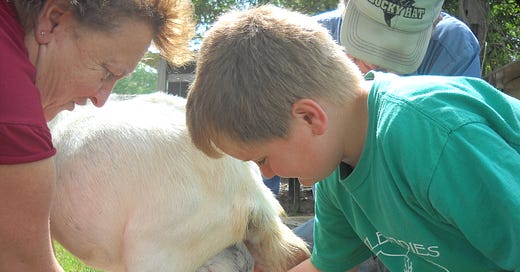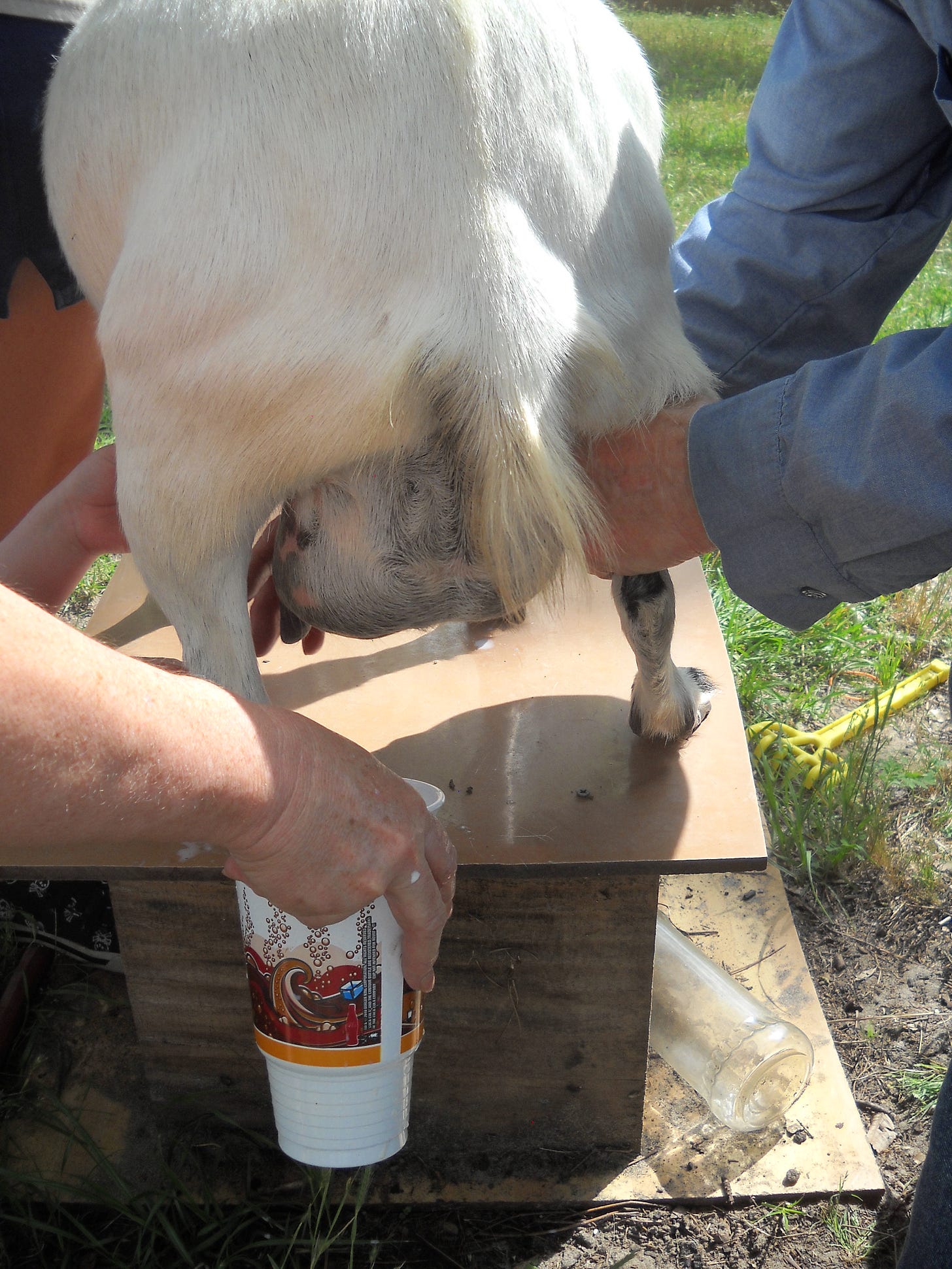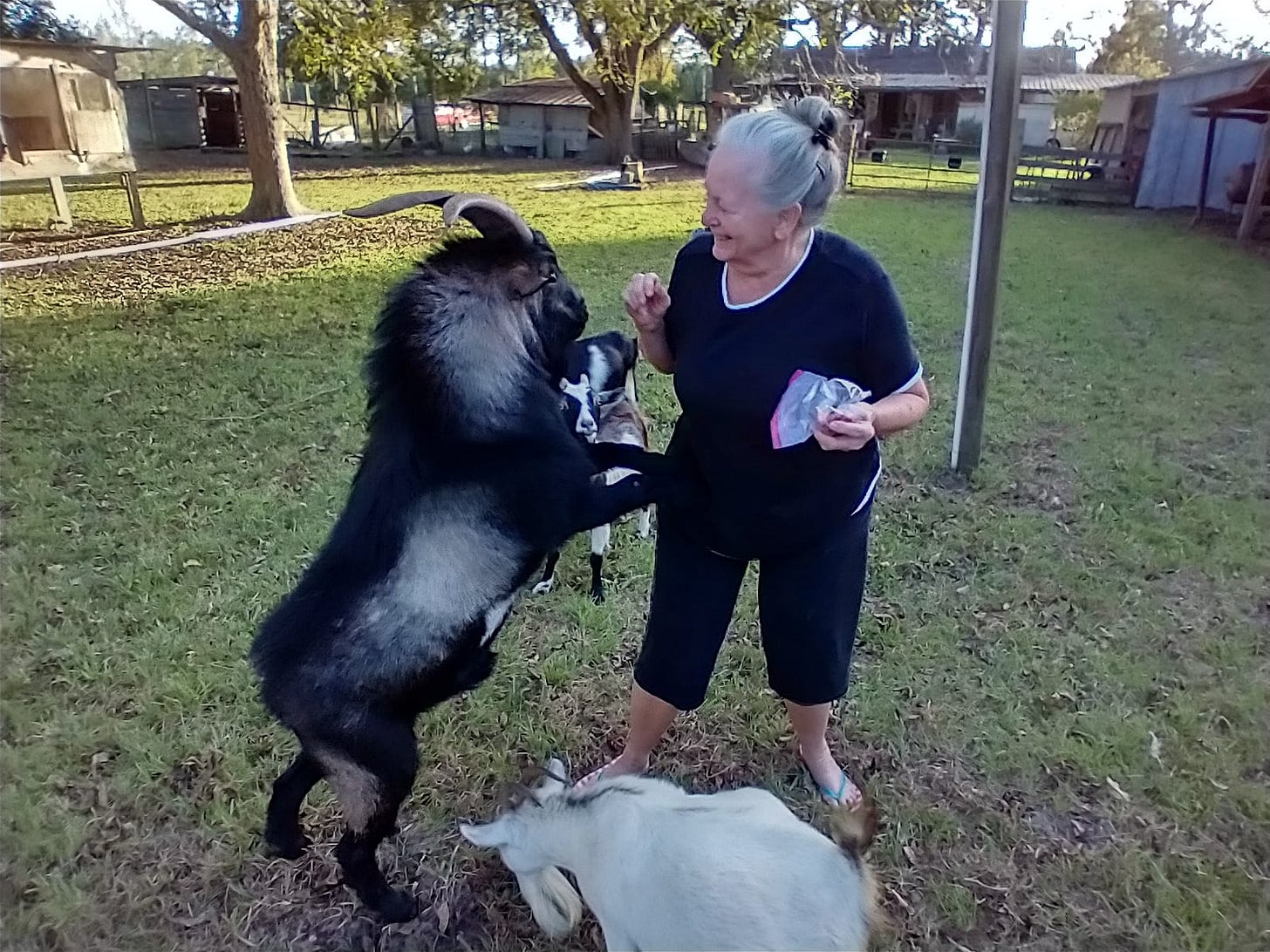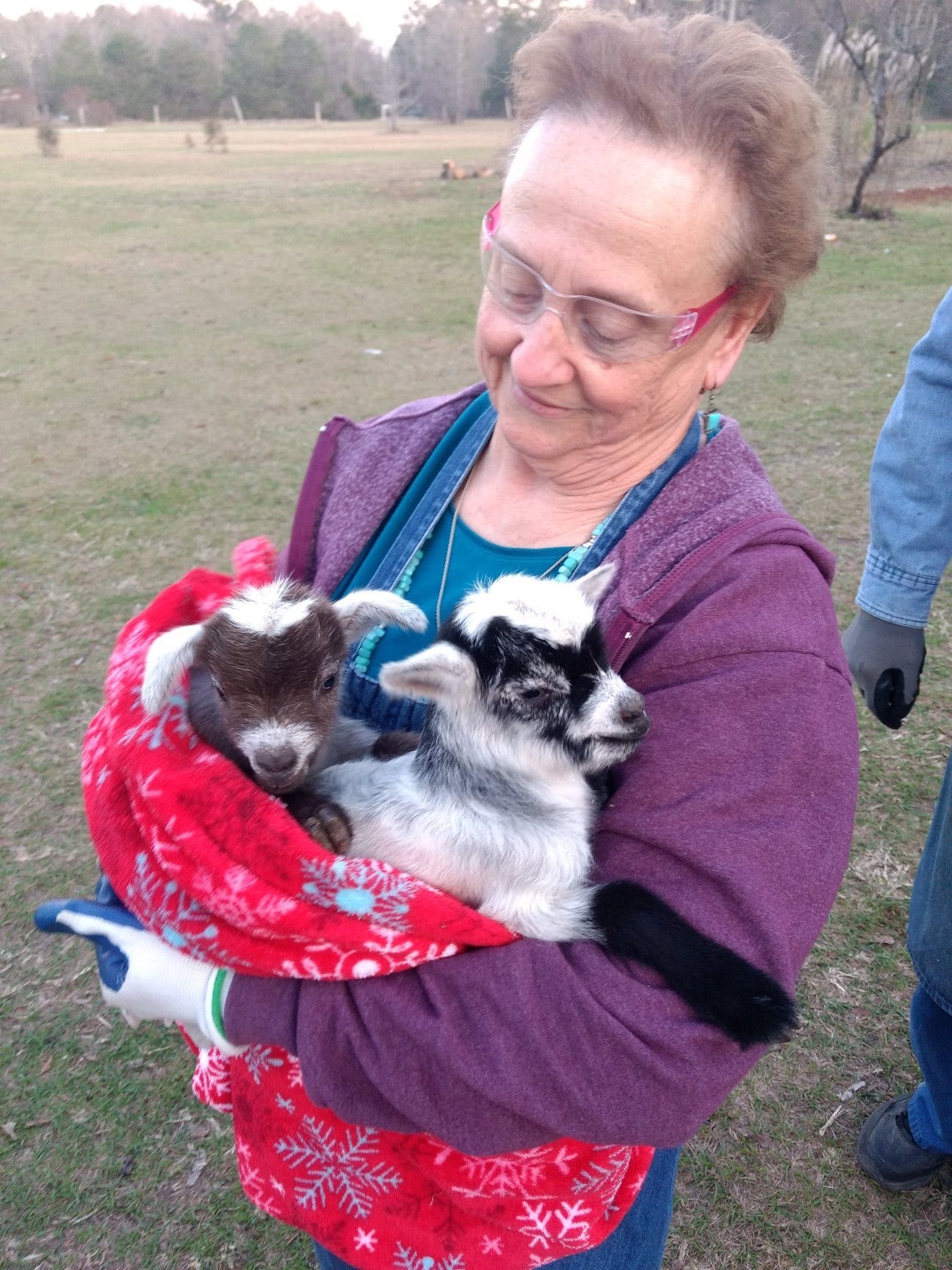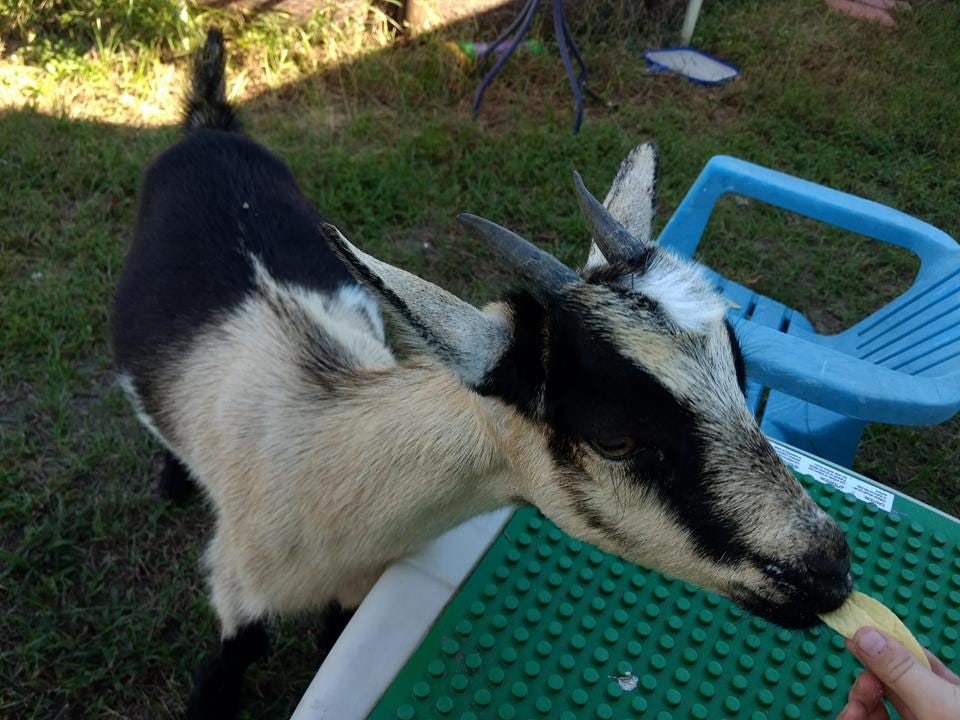The Milking of Little Momma
E.E. Cummings once gave us “The way to hump a cow is not,” and while I’m still not sure if this was a poem or a how-to guide, it greatly disturbed my childhood.
The noted poet E.E. Cummings once gave us “The way to hump a cow is not,” and while I’m still not sure if this was a poem or a how-to guide, it greatly disturbed my childhood growing up in the rural American South.
Poetry aside, there have been other disturbing moments sparked from a life on a South Carolina Lowcountry farm.
My seven-year-old son pretty well summed up what everyone else was thinking that day: “Pop, this is nasty!”
It was a gang milking by force. Several members of the DeWitt family, a clan of people that some neighbors suspect “ain’t quite right,” was huddled around a bleating, squalling pigmy goat, a nanny aptly named Little Momma. My wife held the horns, which actually make a pretty good pair of handles if you ever plan to do weird things to a goat, my mother held two kicking rear legs, and my father, Pop, holding an udder in each hand, was showing one disgusted and possibly traumatized little boy the proper way to extract milk from a goat.
(Where was I during this epic moment of farm life, you may wonder? Well, someone had to take pictures and write about it in case the animal rights people or child protective services needed evidence.)
“Any time you plan on milking a goat or a cow you need to start working with them when they are young, so the animal can get used to being handled by humans on a regular basis,” Pop instructed my son. “Otherwise, you might get kicked off the milk stool. The trick is to put your hands on that animal every time you walk into the pasture. Just put your hands on her milk bag every day until she gets used to it.”
This brought back the unsettling childhood memory of my father stalking around behind an adolescent dairy cow, rubbing her udders in broad daylight, without even wearing a pair of gloves to keep it from getting weird.
(The DeWitt family is always doing something weird on the farm. Have you heard of goat yoga? How about goat dancing?)
As an adult and a father in my own right, I never went in for all that intimate contact with the livestock. The last thing I want is some attention-starved female critter falling in love with me and following me around the pasture, begging me to rub her under regions, especially when the neighbors are already spreading rumors about my Dad.
Pop squirting me in the face with goat milk straight from the teat brought my attention back to the action. Little Momma, a young nanny, was having a bad week. We had taken her two children to wean them off milk and onto grass to prepare them for the market, but then the nanny got sick.
“So, why are we doing this, Pop?” my son asked.
“She’ll get down and run a fever if we don’t take some of her milk. This will help her dry up.”
“Are you going to drink it?”
“We could. Goat milk has less bacteria than cow’s milk. My daddy, your great granddaddy, used to drink it when he had stomach ulcers. And we used to drink fresh cow’s milk when I was a little boy. We couldn’t run to the grocery store every time we needed something, so we took care of ourselves. I had to milk the cows every morning before I went to school. Now, fresh milk won’t keep but a couple of days, but if you don’t drink it right away you can let it sit out, then take the clabber, put some sugar in it, and eat it.”
(Every animal deserves a treat after a good brute-force milking.)
Pop had an attentive audience. He took the boy around and showed him how to handle a milk cow—never stand directly behind her or you’ll get kicked—and the kid was all ears.
“You can take care of one good dairy cow and have more milk than you can drink,” Pop continued teaching, “Or you can take that same momma cow and nurse eight calves, four at a time, and either sell them or raise some up to butcher and eat.”
Then the pair put their boots on and rounded up the rest of the goats, one by one, to give them their worm medicine. Later, the old man showed the boy how to get a feisty hen off her nest full of eggs without getting pecked.
The old man talked about the old days. The kid talked about Transformers and cartoon animals. Side by side, a man and his grandson walked the farm that once belonged to my great grandfather, a farm that has been in our family for nearly three centuries, sharing stories and laughs and lessons.
Perhaps the way to milk a goat has nothing to do with poetry or pints or quarts, or even finger pressure or stools, but who you do it with and the traditions and lessons you pass down.
Today’s world is a fast-moving, ever-changing place, full of wireless, touch-free devices and endless online connections. But it’s also an unstable place, where stock markets crash, companies go under, and honest, hard-working people can get laid off by the thousands.
But no matter what happens in the future, I know a few farm kids that will be better prepared to survive, who know how to stay “in touch” with their animals, their farm life and their roots.
I left Pop and the kid alone. I had already learned my farm lessons coming up. It was my son’s turn. And they looked like they were having too much fun to interrupt.
Besides, I had to go brush the taste of fresh goat milk out of my mouth.
Author’s Note: No animals were harmed in the writing of this story, but my childhood may have irreparably damaged.

